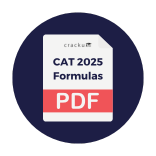ISRO Scientist or Engineer Computer Science Dec 2017
For the following questions answer them individually
ISRO Scientist or Engineer Computer Science Dec 2017 - Question 61
Consider the following scheduling :

Matching the table in the order A, B, C gives
ISRO Scientist or Engineer Computer Science Dec 2017 - Question 62
A system uses FIFO policy for page replacement. It has 4 page frames with no pages loaded to begin with. The system first accesses 50 distinct pages in some order and then accesses the same 50 pages in reverse order. How many page faults will occur?
ISRO Scientist or Engineer Computer Science Dec 2017 - Question 63
Which of the following is false?
ISRO Scientist or Engineer Computer Science Dec 2017 - Question 64
Which of the following is not true with respect to deadlock prevention and deadlock avoidance schemes?
ISRO Scientist or Engineer Computer Science Dec 2017 - Question 65
Which one of the following are essential features of object oriented language?
A. Abstraction and encapsulation
B. Strictly-typed
C. Type-safe property coupled with sub-type rule
D. Polymorphism in the presence of inheritance
ISRO Scientist or Engineer Computer Science Dec 2017 - Question 66
Which languages necessarily need heap allocation in the run time environment?
ISRO Scientist or Engineer Computer Science Dec 2017 - Question 67
Consider the code segment
int i, j, x, y, m, n;
n = 20;
for (i = 0, i < n; i++)
{
for (j = 0; j < n; j++)
{
if (i % 2)
{
x + = ((4*j) + 5*i);
y += (7 + 4*j);
}
}
}
m = x + y;
Which one of the following is false?
ISRO Scientist or Engineer Computer Science Dec 2017 - Question 68
Consider the following table :

Matching A, B, C, D in the same order gives :
ISRO Scientist or Engineer Computer Science Dec 2017 - Question 69
Consider a disk sequence with 100 cylinders. The request to access the cylinder occur in the following sequence :
4, 34, 10, 7, 19, 73, 2, 15, 6, 20
Assuming that the head is currently at cylinder 50, what is the time taken to satisfy all requests if it takes 2 ms to move from one cylinder to adjacent one and shortest seek time first policy is used?
ISRO Scientist or Engineer Computer Science Dec 2017 - Question 70
A counting semaphore was initialised to 7. Then 20 P (wait) operations and x V (signal) operations were completed on this semaphore. If the final value of semaphore is 5, then the value x will be

